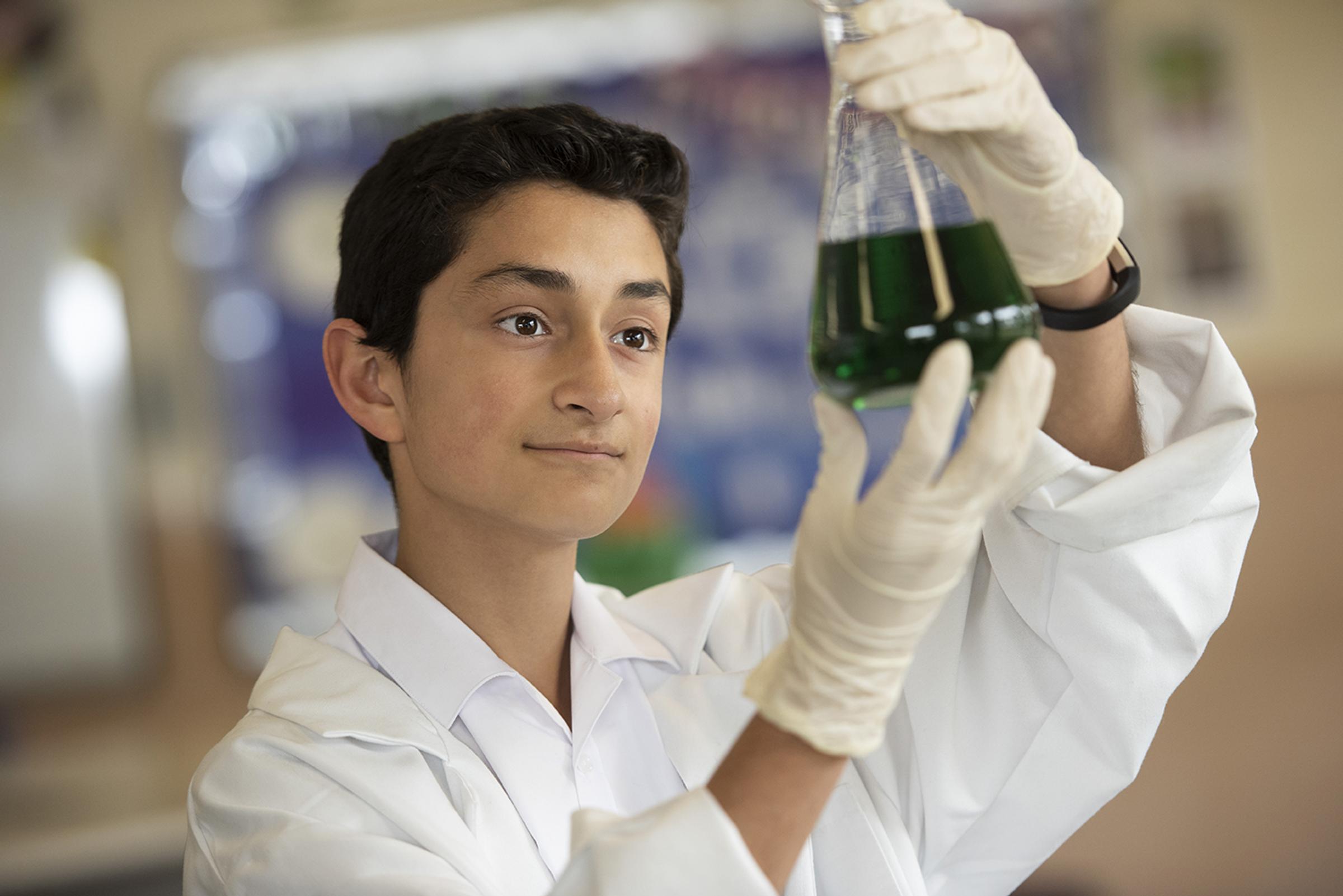Chemistry

CHEMISTRY
Unit 1: How can the diversity of materials be explained?
Students investigate the chemical properties of a range of materials from metals and salts to polymers and nanomaterials. Using their knowledge of elements and atomic structure students explore and explain the relationships between properties, structure and bonding forces within and between particles.
Outcome 1: Relate the position of elements in the periodic table to their properties, investigate the structures and properties of metals and ionic compounds, and calculate mole quantities.
Outcome 2: Investigate and explain the properties of carbon lattices and molecular substances with reference to their structures and bonding, use systematic nomenclature to name organic compounds, and explain how polymers can be designed for a purpose.
Outcome 3: Investigate a question related to the development, use and/or modification of a selected material or chemical and communicate a substantiated response to the question.
Unit 2: What makes water such a unique chemical?
Students explore the physical and chemical properties of water, acid-base chemistry and redox chemistry. Students are introduced to stoichiometry and to analytical techniques and instrumental procedures, and apply these to water samples.
Outcome 1: Relate the properties of water to its structure and bonding,and explain the importance of the properties and reactions of water in selected contexts.
Outcome 2: Measure amounts of dissolved substances in water and analyse water samples for salts, organic compounds and acids and bases.
Outcome 3: Design and undertake a quantitative laboratory investigation related to water quality, and draw conclusions based on evidence from collected data.
Unit 3: How can chemical processes be designed to optimise efficiency?
Students explore energy options and the chemical production of materials with reference to efficiencies, renewability and the minimisation of their impact on the environment. Students consider the purpose, design and operating principles of galvanic cells, fuel cells and electrolytic cells.
Outcome 1: Compare fuels quantitatively with reference to combustion products and energy outputs, apply knowledge of the electrochemical series to design, construct and test galvanic cells, and evaluate energy resources based on energy efficiency, renewability and environmental impact.
Outcome 2: Apply rate and equilibrium principles to predict how the rate and extent of reactions can be optimised, and explain how electrolysis is involved in the production of chemicals and in the recharging of batteries.
Outcome 3: Design and undertake a practical investigation related to energy and present methodologies, findings and conclusions in a scientific poster.
Unit 4: How are organic compounds categorised, analysed and used?
Students study the ways in which organic structures are represented and named, the types of instruments that are used to analyse molecules, pathways for the production of organic molecules, and investigate key food molecules. They predict the products of reaction pathways and design pathways to produce particular compounds.
Outcome 1: Compare structures and reactions of the major organic families of compounds, deduce structures of organic compounds using instrumental analysis data, and design reaction pathways for the synthesis of organic molecules.
Outcome 2: Distinguish between the chemical structures of key food molecules, analyse the chemical reactions involved in the metabolism of the major components of food, and calculate the energy content of food.
